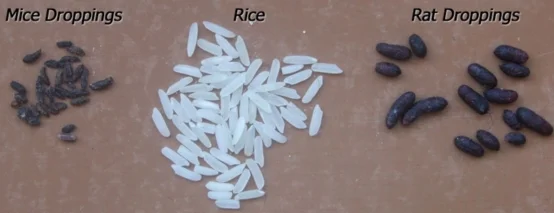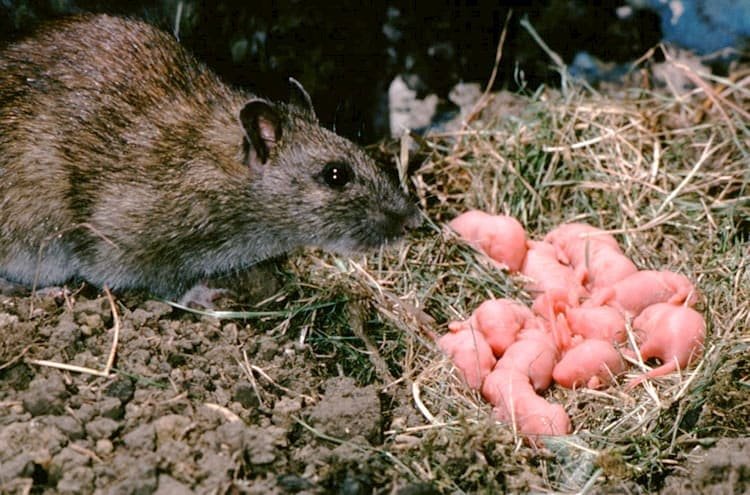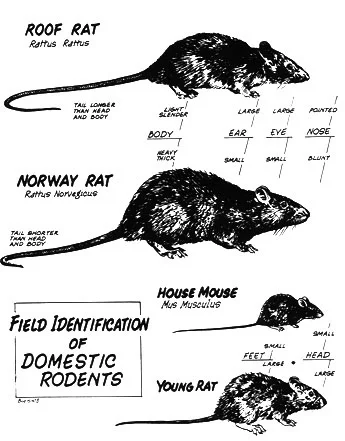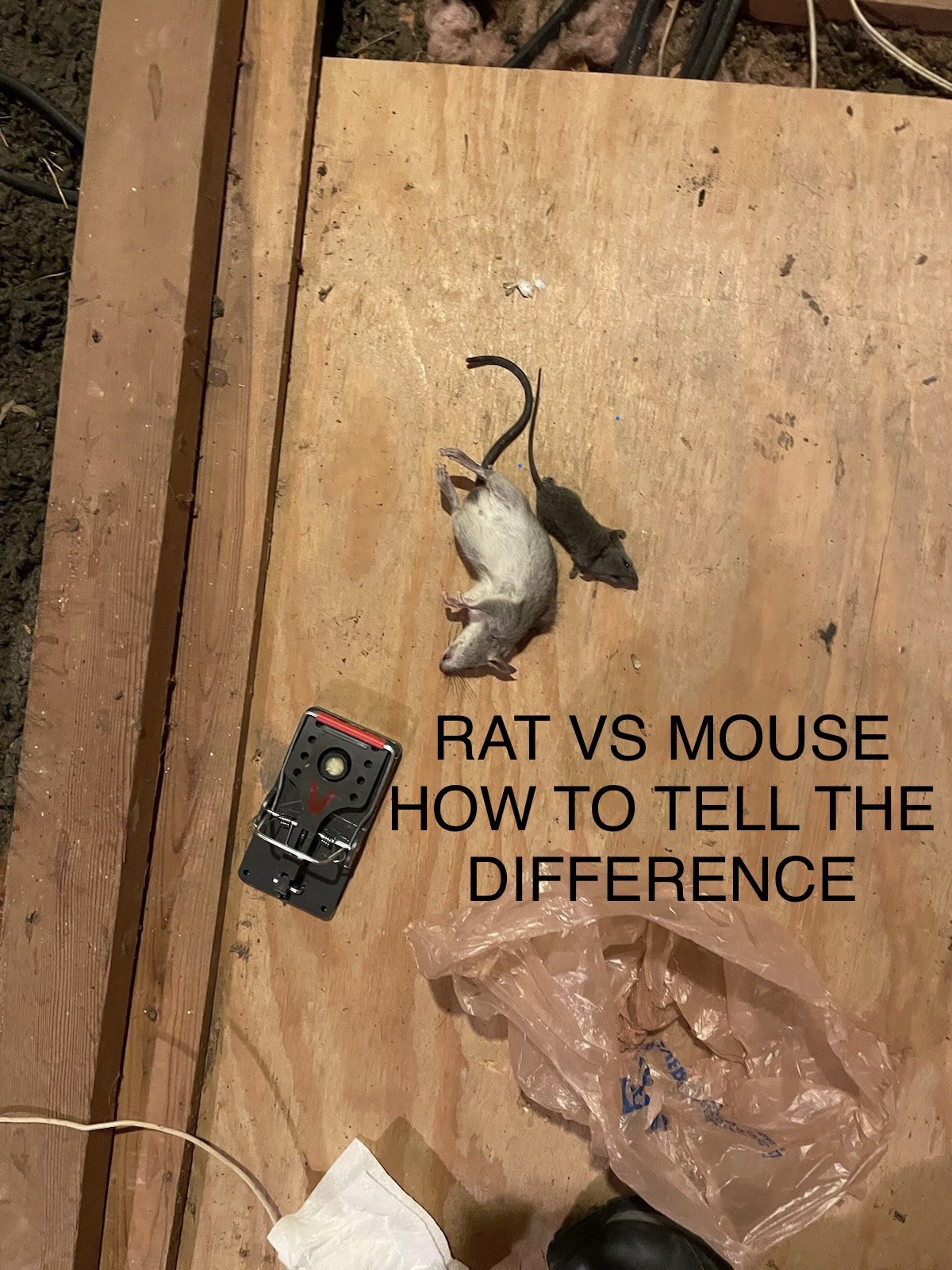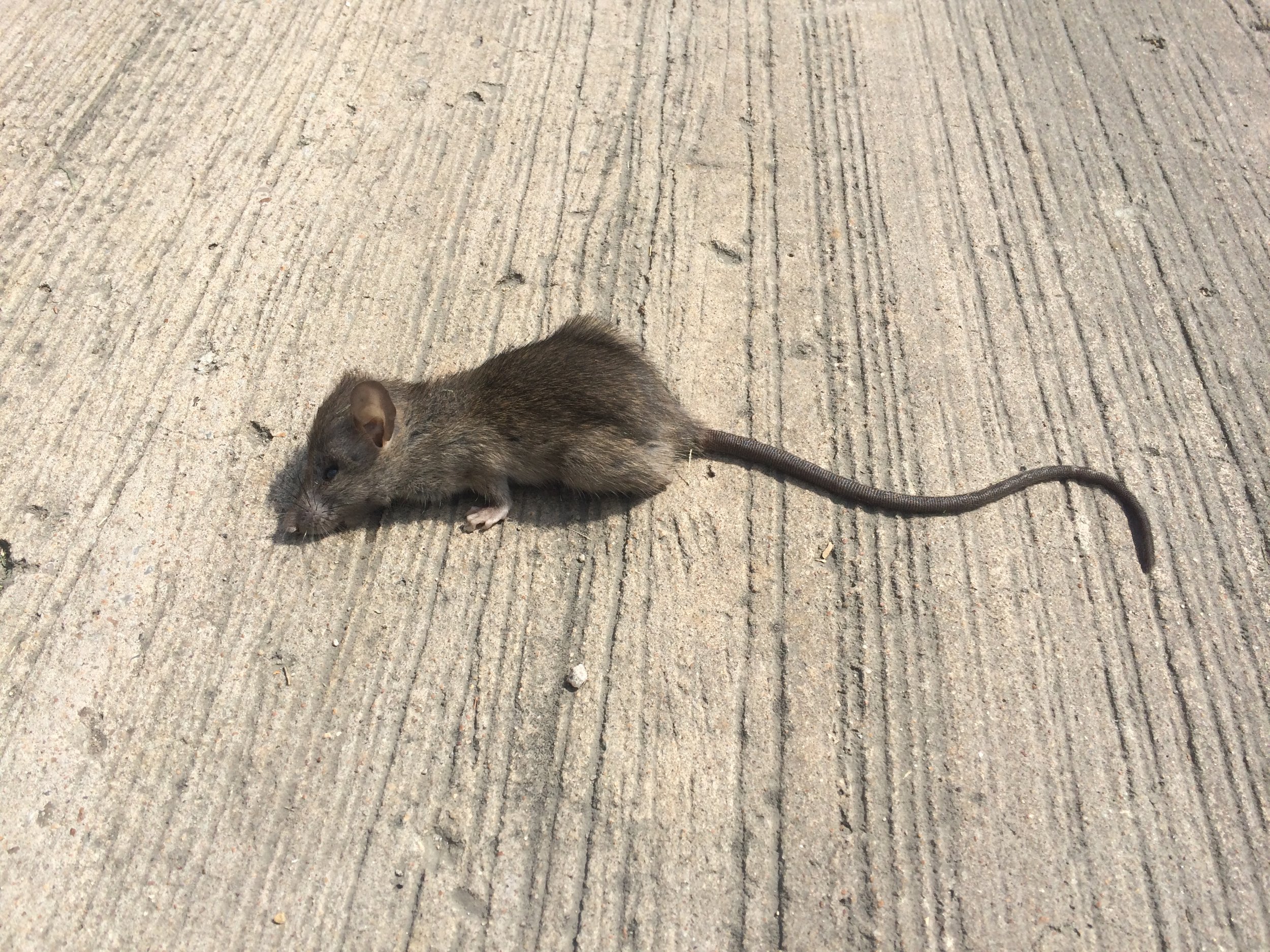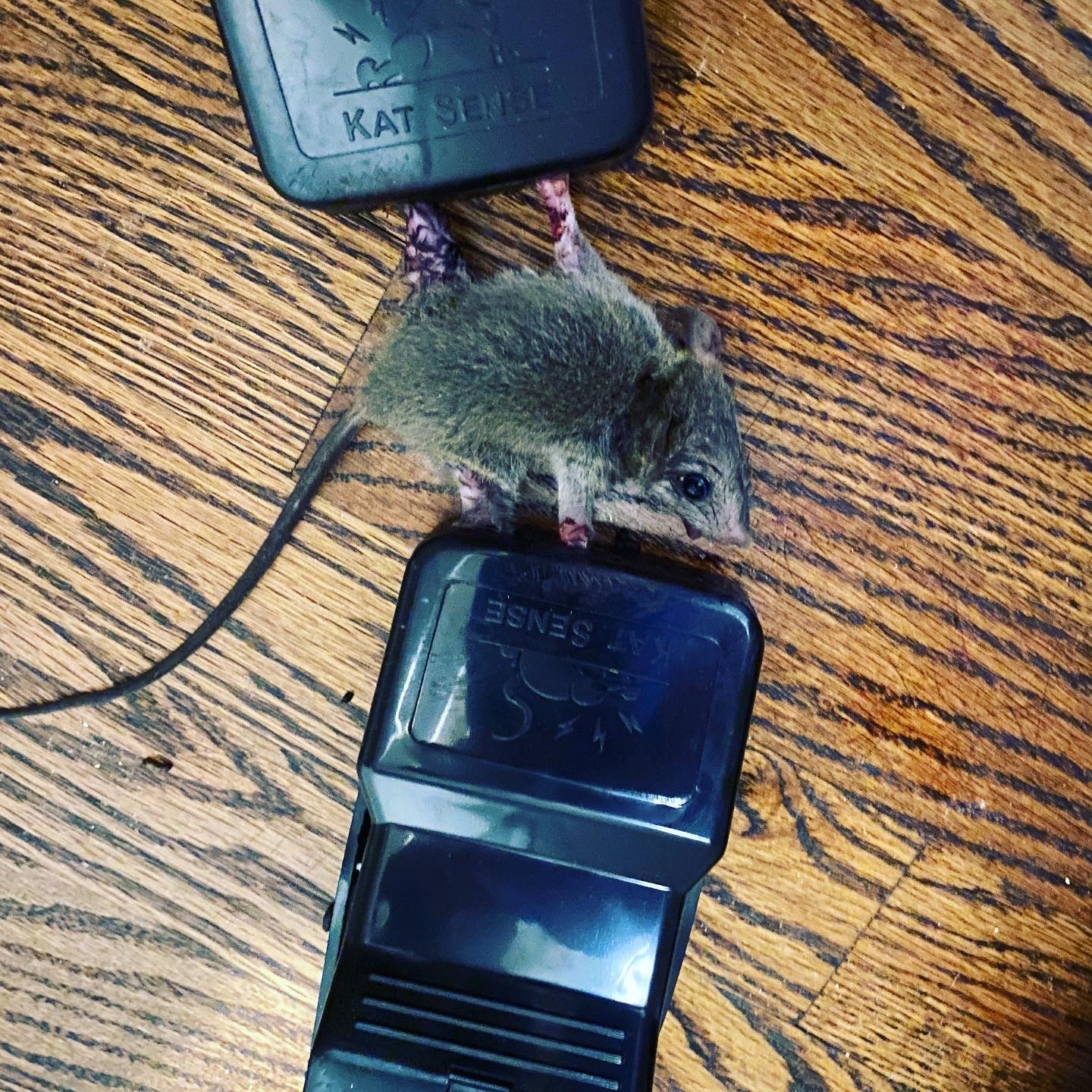Many wild rats carry a number of diseases and parasites, but which diseases, and what percentage of the rat population is infected, vary with the population under study. Some parasites may have interesting effects on rat behavior which benefit the parasite.
Wild rats carry mycoplasma, though the percentage of the population that is infected may vary from place to place.
Wild rats do not carry the plague. When rats catch the plague, they die from it. Other wild rodents who are resistant to the plague carry it in their bloodstream, and the plague is transmitted from animal to animal by fleas. Plague epidemics were caused by the plague jumping (by flea) from these wild rodents to rats, and from rats (before or as they died) to humans. Today, the plague is treatable with antibiotics and cases are rare.
Wild rats almost never carry rabies, and there has never been a case of human rabies caused by rat bite in the United States, though such cases have been found very rarely in other countries.
Do wild rats carry diseases and parasites?
Yes, some of them do. Which diseases and parasites they carry, and what percentage of the rats are infected, depends on the population of rats under study.
Parasite and disease load of wild rats on farms in England
On English farms:
Webster and MacDonald (1995) studied the parasite and disease load of wild rats on farms in England:
red text = transmissible to humans
Helminths (worms):
the oxyuroid pinworm Syphacia muris in 67% of the rats
the strongoloyd parasite Nippostronglyus brasiliensis found in 23%
the liver worm Capillaria in 23%
the cestode Hymenolepsis diminuta in 22%
Toxocara cati causing Toxocariasis in 15%
the oxyuroid pinworm Heterakis spp. in 14%
the cestode Hymenolepsis nana in 11%
the intestinal tapeworm Taenia taeniaeformis in 11%
Bacteria
Leptospira spp. bacteria causing Weil's disease in 14%
Listeria spp. bacteria causing listeriosis in 11%
Yersinia enterocolitica bacteria causing yersiniosis in 11%
Pasturella spp. bacteria causing Pasturellosis in 6%
Pseudomonas spp. bacteria causing Meilioidosis in 4%
Protozoa
Cryptosporidium parvum causing cryptosporidiosis in 63% of the rats
Toxoplasma gondii causing toxoplasmosis in 35%
Trypanosoma lewisii in 29%
Eimeria separata in 8%
Rickettsia
Coxiella burnetti evidence of infection by Q fever in 34%
Viruses
Hantavirus causing Hantaan-fever or hemorrhagic fever in 5%
Ectoparasites (note: these ectoparasites are vectors for diseases which are transmissible to humans, such as typhus)
Fleas found on 100% of the rats
Mites found on 67%
Lice found on 38%
In rural Croatia
Stojcevic et al. (2004) examined 255 wild Norway rats captured in rural Croatia for parasites. Overall, they found that 72.6% of the rats were infected with some form of parasite. Nearly a third of the rats (32.2%) were infected with external parasites, and nearly two thirds (65.1%) with internal parasites.
External parasites were found on 32.2% of the rats:
sucking lice Poliplax spinulosa on (14.5%)
chewing lice Trimenopon jenningsi (3.4%)
chewing lice Gyropus ovalis (1.57%)
flea Leptopsilla segnis (1.18%)
flea Ceratophylus fasciatus (12.1%)
mite Myobia musculi (5.49%)
mite Myocoptes musculinus (1.18%)
mite Dermanyssus sanguineus (0.78%)
Internal parasites were found in 65.1% ofd the rats:
Nematodes:
Capillaria spp. (18%)
Capillaria hepatica (0.39%): liver worm
Syphacia muris (3.53%)
Nippostrongylus brasiliensis (16.9%)
Heterakis spumosa (25.9%)
Strongyloides ratti (1.18%)
Ascaris suum eggs (8.24%)
Toxocara spp. eggs (1.96%)
Tapeworms:
Hymenolepsis diminuta (36.9%)
Taenia taeniaeformis (10.6%)
Examples of single disease studies on wild rats
Many studies examine a single disease in rats in a particular location. For example:
Parasites
In Norway rats examined in Chunchon, Korea, Seong et al. (1995) found the following helminths:
Capillaria hepatica in 25.6% of rats
Hymenolepis diminuta in 32.6%
Taenia taeniaeformis metacestode in 65.1%
Brachylaima mascomai was found and studied in wild rats living in the Llobregat delta in Spain (Gracena and Gonzalez-Moreno 2002).
Trichinosis (transmitted when humans eat undercooked meat from hogs that consumed food contaminated with feces from infected rats):
The spiralis causing trichinosis in humans and swine, Trichinella britovi, was found to be prevalent in Norway rats in Croatia (Marinculic et al. 2001)
42.4% of wild rats were found to be infected with trichenellosis on a pig farm (Leiby et al. 1990)
19% of rats from waste disposal sites in Finland carried Trichenella spp. (Mikkonen et al. 2005)
21.4% of wild rats from a hog farm in the Slovak Repuclib carried Trichenella spp. (Hurnikova et al. 2005)
Wild Norway rats were found to be a reservoir host of Cryptosporidium parvum, with an overall parasite occurence of 24%. The percentage of rats infected with the parasite varied according to age, sex and season (Quy et al. 1999).
Bacteria
Leptospira spp.
16% of wild Norway rats in and around Saint Petersburg, Russia carried Leptospirosis (Tokarevich et al. 2002)
45% of wild Norway rats on the Ripa Grande-San Michele port in Rome, Italy carried Leptospirosis (Pezella et al. 2004)
16.9% of brain tissue samples and 27.1% of kidney samples from 59 wild Norway rats collected along the Black Sea in Turkey tested positive for Leptospirosis (Sunbul et al. 2001).
Salmonella
low percentages have been reported in populations of Norway rats in the United States (Davis 1948, Davis 1951b, Nakashima et al. 1978)
8% of fecal samples from wild Norway rats from the West Midlands, UK, tested positive for salmonella (Hilton et al.2002).
Protozoa
Six Sarcocystis spp. were identified in the muscles of 33% of wild rodents (Rattus species and Bandicota indica) in central Thailand. One of the parasite species, Sarcocystis cymruensis, was prevalent in R. norvegicus (Jakel et al. 1997)
Viruses
Hepatitis E:
Kabrane-Lazizie et al. (1999) studied Hepatitis E in wild rats in the United States. They trapped 239 rats from three widely separated regions of the U.S., and the infection rates were very high: 77% of rats from Maryland, 90% of rats from Hawaii, and 44% of rats from Louisiana had been infected with Hepatitis E
31% of wild Norway rats (114 out of 362) in Japan tested positive for hepatitis E antibodies (Herano et al. 2003)
Hantavirus:
Norway rats found infected with hantavirus (Seoul virus) in Baltimore, Maryland (Hinson et al. 2004)
First reported case of a wild rat carrying Seoul hantavirus on a wild Norway rat in Europe (France) (Heyman et al. 2004)
31% of 29 Norway rats captured in Buenos Aires had antibodies to Seoul hantavirus (Seijo et al. 2003)
20.9% (39 out of 187) of Norway rats captured in Cambodia had antibodies to Seoul hantavirus (Reynes et al. 2003)
1.53% (7 individuals) of Norway rats captured in a fresh food market tested positive to Hantaan virus in Bangkok, Thailand (Kantakamalakul et al. 2003).
These are just a few examples of such studies. Finding all the parasites and diseases carried by Norway rats from different populations around the world would be an enormous task and is far beyond the scope of this website.
Diseases and injuries of wild rats in a semi-natural enclosure
Calhoun (1963) conducted a two-year study in which he kept wild rats in a 1/4 acre enclosure that was almost entirely predator-proof. He provisioned the rats with regular food and water. He started with ten wild rats and allowed the individuals to breed and die naturally. The population gradually grew to nearly 200 rats over two years. Calhoun trapped 284 rats repeatedly and examined them for parasites, diseases, and injuries.
Injuries
Young rats of less than 40 days of age were nursing or near their mother and were never bitten. After the rats were weaned they started receiving a very few bites from other rats. Constant, low levels of aggression and biting continued until the rats reached social maturity at around 6 months for males and 8.1 months for females. At this age the rats received about 1.75 bites per female and 1.81 bites per male. After this age wounding increased over several months to stabilize at about 7 bites per female at age 368 days (12.3 months) and 9.5 bites per male at 266 days (8.9 months). The level of aggression in this population is probably higher than that of free-living wild rats, because this population was confined and social strife was common.
The wounds were usually small and were inflicted on the rump. If the wounds didn't become infected they typically healed within 2 weeks. However, some wounds became infected, and developed into extensive shallow festering wounds that took weeks or months to heal.
External Parasites
Flies and maggots: Rats (usually juveniles) occasionally had masses of fly eggs deposited in their fur during the warmer months. The most significant effect of flies on the rats' health occured when the flies laid their eggs in infected wounds. An infestation of a wound by maggots sometimes caused death by myiasis. Death by myiasis was one of the prime mortality factors in this population.
Bot flies: Eight percent were found to have a warbles (bot fly) infestation. Warbles are the larvae (maggots) of the Cuterebra genus. The larvae enter through a natural opening like the nose or mouth, then live under the skin, forming a boil. Several weeks later they slice and chew their way through the skin. This process caused open lesions which frequently became infected.
Fleas: The rats had very few fleas: only one flea was observed.
Ticks: 2% of the rats had ticks, four of which were the dog tick, Dermacentor.
Lice or nits: 9.1% of the rats had common to abundant lice.
Diseases
Respiratory disease: 7.4% of the rats were found with sneezing, coughing, wheezing and difficulty breathing. Though there is no direct evidence, Calhoun believes that colds were an important debilitating factor contributing to mortality of weak individuals.
Head tilt: 1.4% of the rats (4 individuals) had a head tilt, presumably from a middle ear infection by Streptobacilus. Despite this condition, the rats walked about and one of them became a dominant individual in his burrow.
Microorganisms and internal parasites
The experiment was terminated after two years. At this time, 77 females and 54 males were autopsied.
Microorganisms
None of the rats had Salmonella, Leptospira, or Histoplasma.
Streptobacillus moniliformis: found in 45.5% (15 of 33) of the necropsied rats. This organism can be transmitted to humans, where it causes rat-bite fever.
Bartonella muris (causes anemia): Two rats were examined for this bacterium and both were positive.
Helminth parasites (worms)
Trichosomoides crassicauda (6.5%): bladder thread worm.
Cappillaria hepatica (53.3%): liver worm
Strongyloides ratti (16.4%)
Heterakis spumosa (60.9%)
Syphacia obvelata (2.2%): pinworm
Tricuris muris (2.2%)
Hymenolepsis spp. (42.6%)L cestode
Cysticercus fasciolaris (3.3%), cyst stage of Taenia taeniaeformis: intestinal tapeworm.
Parasites and behavior
Parasite infection can affect the behavior of wild rats. Webster et al. 1994 and Webster 1994 found that rats who carried Toxoplasma gondii were more active and more likely to approach novel stimuli than uninfected rats. Infected rats were also more likely to be trapped than uninfected rats. The differences in behavior may come from pathological changes caused by Toxoplasma: cysts in the brains of infected rats.
These behavioral changes in the rats may be advantageous to the parasite because these changes render the rat more likely to be eaten by a domestic cat -- the preferred host of Toxoplasma. Toxoplasma only influences behaviors that benefit itself, such as exploratory behavior, rather than causing a general alteration of the rat's behavior (Berdoy et al 1995).
For a review of the impact of Toxoplasma gondii on rat, mouse and human behavior, see Webster 2001. For more on the fascinating subject of parasites and behavior, see Moore 2002.
Do wild rats have mycoplasma?
This is an interesting question to rat owners, because the vast majority of the pet rat population is infected with Mycoplasma pulmonis, which may cause progressively serious respiratory problems in the host. Mycoplasma is incurable, though the symptoms may be treated with antibiotics.
Do wild rats suffer from mycoplasma too?
There is evidence that wild rats do, indeed, carry mycoplasma. Owen (1976) trapped 80 wild Norway rats from three populations and examined them for parasites and diseases. Two of the populations had 95% and 100% M. pulmonis infection rates, while the third population had a 0% infection rate. The author speculated that the uninfected population could represent an isolated pocket of Mycoplasma-free rats. Overall, 75% of the rats were infected with M. pulmonis and 1.25% were infected with M. arthriditis.
Giebel et al (1990) trapped six wild Norway rats and found a species of Mycoplasma, M. moatsii, in the intestinal cells and feces of all six rats.
Koshimizu et al (1993) trapped 35 wild rats from 7 different species. They did not find Mycoplasma in the few R. norvegicus they captured, but they did find it in R. rattus. However, the number of R. norvegicus captured was very small, so we cannot conclude from this study that there is no Mycoplasma in that rat population.
Therefore, wild rats carry Mycoplasma, but the percentage of rats affected may vary from one population to the next.
Do wild rats carry the plague?
The plague bacterium is maintained at low, steady levels (called enzootic infection) in just a few species of rodent hosts, such as Microtus spp. (voles), and Peromyscus spp. (deer mice, white-footed mice, Texas mice, cotton mice etc.). Some populations of these species are resistant to the plague and therefore form a reservoir from which outbreaks can occur in other species. Other non-rodent species have been found serologically positive to the plague as well (e.g. bears, bobcats, badgers, fox, ringtails, skunks, mountain lion, deer, African elephant, African buffalo).
The plague bacterium, Yersinia pestis, is transmitted from one animal to another by the flea. An outbreak occurs when infected fleas change host species and unload large numbers of plague bacteria onto a new, less resistant host species. In the United States, these new hosts serve as amplifying (epizootic) hosts, and they include rock squirrels, California ground squirrels, antelope ground squirrels, prairie dogs, chipmunks, woodrats, and less resistant populations of Microtus and Peromyscus. In urban areas, these hosts include the ship rat (Rattus rattus) and the Norway rat. Different species of flea may become involved in an outbreak, including the rat flea (Xenopsylla cheopis), the squirrel flea (Oropsylla montana), and the human flea (Pulex irritans). The plague is therefore carried by many different rodent species. However the rat, because it lives in close proximity to humans, has been most frequently associated with plague outbreaks in people.
Rats are not resistant to the plague, so an outbreak of the plague in rats is associated with large rat die-offs. Infected rats usually die within a few days of a high-grade bacteremia. The infected fleas do not die, however, and the rat's death forces the infected fleas to find other hosts: other rats, or humans.
Humans are therefore at risk of contracting the plague if they live near or handle plague-infected rats or their recently dead bodies. Simond (1898), one of the early observers of plague transmission, observed that handling a rat which has been dead for more than 24 hours did not lead to infection, because the infected fleas had already left the body.
The most famous outbreak of the plague was the Black Death of 1330-1352. This epidemic was spread by the ship rat and its flea, which spread the plague to humans throughout Asia and Europe. The last plague outbreak in the United States was in 1924-1925 in Los Angeles. Since then, human plague has been found as scattered cases in rural areas in the western United States (10-15 cases per year) (Levy 1999). Currently, plague-infected rodents are found in many parts of the world (CDC), but transmission to humans is relatively rare (1,000-3,000 cases per year worldwide). Today, the plague is 100% treatable with antibiotics.
Was the Black Death really caused by Y. pestis?
Over the past twenty years there have been several challenges to the theory that the Black Death was caused by Y. pestis (Twigg 1985, Scott and Duncan 2001, Cohn 2003). These authors suggest that the Black Death might have been caused by a disease other than plague, such as anthrax (Twigg 1985), an Ebola-like illness (Scott and Duncan 2001), or an unknown disease which has gone extinct (Cohn 2003). They argue that the surviving descriptions we have of the medieval Black Death differ on a number of points from a recent, well-documented Y. pestis plague epidemic in the 19th and 20th century in Southeast Asia and India called the Third Pandemic.
However, a team of French paleomicrobiologists recently discovered the DNA of the plague bacillus Y. pestis in the tooth pulp of plague victims from the Black Death (Raoult et al.2000). Gilbert et al. (2004) were unable to find Y. pestis DNA in the teeth of Black Death victims, but the technique they used to examine the tooth pulp was a different and less sensitive technique than that used by the original team (Drancourt and Raoult 2004), and therefore not an exact replicate study.
Most recently, Haensch et al. (2010) isolated DNA and protein signatures specific for in human skeletons from mass graves associated with the Black Death in northern, central and southern Europe. They confirmed that Y. pestis caused the Black Death and later epidemics on the entire European continent over the course of four centuries.
Further reading on the plague:
Songer, Glen. Lecture Notes on Pathogenic Bacteriology
Chamberlain, Neil. Lecture Notes on the Plague
CDC on the plague
Levy, Craig.1999. Plague in the United States, 1995-1997. Infect. Med 16(1):54-64.
Kelly, J. 2005. The great mortality: an intimate history of the Black Death, the most devastating plague of all time. New York: HarperCollins Publishers.
Do wild rats carry rabies?
Are wild rats ever found to carry rabies?
Very few rats infected with rabies have ever been found in the United States. Winkler (1973) reviewed the literature on rodent rabies in the United States. He found that during the 18-year period of 1953 and 1970, a small number of rabid rats (39 rats) were found in the United States. The numbers were extremely small: only 11 rabid rats were found in the U.S. during the three year period of 1953-1955. The number of rabid rats declined during the period of time covered by the review, and by the three year period of 1968-1970 only 2 rats were found to be rabid. This decline in the number of rabid rats is probably due to an improvement in diagnostic techniques which led to fewer false positives. In Thailand, 4.7% of Norway rats (9 rats out of 192) were found to be carrying rabies (Smith et al. 1968).
However, no rats were found to be infected with rabies in surveys of wild rat populations in Sri Lanka (Patabendige and Wimalaratne 2003), Poland (Wincewicz 2002), and Bangkok, Thailand (Kantakamalakul 2003).
Have rats ever caused rabies in humans?
Rats and other small rodents have never caused a single case of human rabies in the United States (CDC).
A very few cases of humans infected with rabies by rats have been reported in countries such as Poland, Israel, Thailand and Surinam. In Poland, out of 9,998 cases of human rabies from 1990 to 1994, four were caused by rats (0.04%), while the vast majority were caused by foxes (Zmudziñski and Smreczak 1995, described in Wincewicz 2002). In Israel, one case of human rabies was caused by a bite from a small rodent -- possibly a rat or mouse (Gdalevich et al. 2000). In Thailand, out of 7,000 human rabies cases reported each year, 1% are caused by rat bites (Kamoltham et al. 2002). The majority of rabies cases in Thailand are caused by dogs (86.3%) (Pancharoen et al. 2001). An outbreak of paralytic rabies in children in Surinam was attributed to rat bites (Verlinde et al 1975).
Why is rabies so rare in rats?
The answer is unclear. Currently, it is presumed that rats are so small that they almost never survive the attack of a larger rabid animal, like a raccoon, skunk, or fox.
How fast does rabies progress in rats?
The speed of rabies progression depends on the rat's age, body weight, rabies strain, and rabies dose. The higher the dose, the faster the progression (Baer et al. 1965). The incubation period for wild type rabies (called "street rabies virus") is two to three weeks following injection to the foot in the laboratory (14-18 days: Kitselman and Mital 1967; median 16 days, range 10-25 days: Baer et al. 1968) and mortality is high (100%: Kitselman and Mital 1967; 63.6%: Baer et al. 1968).
Note, however, that a bite from a rabid predator would differ substantially from a needle injection to the foot: a predator's bite might create several wounds, all of which could be inoculated with the rabies virus. A natural bite may also be inflicted on the body of the rat instead of an extremity, and hence closer to the central nervous system. Hypothetically, such bites might be followed by a more rapid progression of the rabies virus and hence a shorter incubation time.
How does the rat's incubation period compare to that of other species?
Comparing rats with other species, raccoons (the most common wild animal carrier of rabies, Krebs et al. 1999, 2002) have an incubation period of about five weeks (estimated by Tinline et al. 2002). Vampire bats survived an average of 12 days after experimental infection (Setien et al. 1998). Ferrets incubate rabies for 22-33 days (Niezgoda et al. 1997a, b. 1998). Dogs incubate rabies from one week to several months (Fekadu 1993, Fekadu and Shaddock 1984).
Humans have a rabies incubation period of 1-3 months, but symptoms have been observed as quickly as a few days after inoculation, and as long as several years later (Rupprecht 2002, Lakhanapal and Sharma 1985).
Don't rats have a dry bite?
Pet rat owners commonly believe that if rats survive an attack by a rabid animal and then survive the disease long enough to bite a human, transmission is impossible because rats have a dry bite. The rat's bite is thought to be "dry" because of the forward position of the teeth in the mouth: this position is thought to prevent the teeth from getting wet. Rabies is transmitted by saliva from a bite, hence, rats could not transmit rabies (or any other saliva-borne disease) even if they did carry it.
This is not, in fact, the case. Rats can and do transmit saliva-borne diseases via bites, such as rat bite fever (Graves and Janda 2001, Grude 2001, Schuurman et al. 1998, Hagelskjaer et al. 1998, Hockman et al. 2000, Weber 1982), septic arthritis (Downing et al. 2001) and ratpox (Marennnikova et al 1988). And, as described above, rats have transmitted rabies to humans in a few rare cases.
Large rodent species and rabbits, which also have forward-placed teeth, have also occasionally transmitted rabies to humans.
Do all individuals with rabies shed the virus in their saliva?
No. As an example, 63% of ferrets infected with raccoon rabies had rabies in their salivary glands, and slightly less than half, 47%, shed the virus in their saliva (Niezgoda et al 1998). Other strains of rabies were shed at even lower rates in the saliva: 13% of ferrets infected with bat rabies had it in their salivary glands, and 4% shed it in their saliva. With skunk rabies, the numbers are even lower: 4% had it in their salivary glands, and none shed it in their saliva (Niezgoda et al. 1997b).
Therefore, even if an animal has the rabies virus, it may not shed the virus in its saliva.
Animal rabies vectors
In the United States, the animals that test positive for rabies most frequently are raccoons, skunks, bats, and foxes, cats, and dogs (in decreasing order of importance) (Krebs et al. 2002). About 2% of cases of animal rabies involve other wild animal species, including large rodents, rabbits and hares (Krebs et al. 1999).
In the 368 human cases of rabies caused by large rodent bites (95%) and rabbit (5%) bites between 1985 and 1994 in the United States, 86% were caused by woodchucks (Childs et al. 1997). In Maryland between 1981 and 1986, 1.2% of rabies cases in humans and domestic animals were caused by woodchucks or rabbits (80% of these cases were from woodchucks) (Moro et al. 1991.
The woodchuck (or groundhog, Marmota monax) occasionally carries rabies, primarily in areas where raccoons are experiencing an outbreak of rabies at the same time. Rabies infections in large rodents and rabbits therefore reflect a spillover from another 'reservoir' species, like raccoons, but such spillovers are unknown in small rodents (like rats) in the United States.
Conclusion
So, the upshot is that wild rats have never caused rabies in humans in the United States and only extremely rarely in other countries. Rats are therefore not considered a serious rabies risk. Rabies shots are not considered necessary after a rat bite (Jaffe 1983). Since 1969, the Public Health Service has advised that "bites of rabbits, squirrels, chipmunks, rats, and mice seldom, if ever, call for rabies prophylaxis" (CDC 1969).


